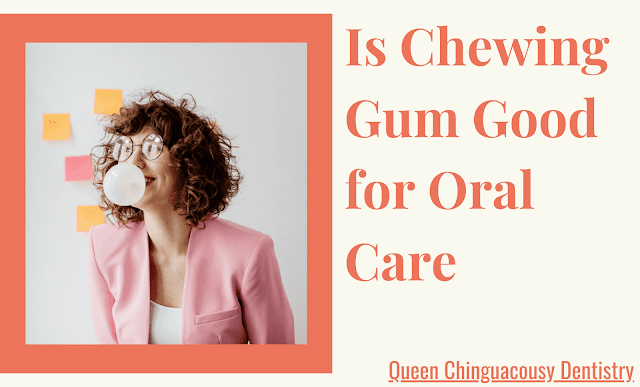Chewing gum is
popular. Even children are often concerned about chewing gum bubbles and the
colourful balls from the chewing gum machine, but adults also like chewing
gum.
The many different
types are chewed for various reasons: Some chewing gum best for oral care
suggested by Best Dentist on Chinguacousy Rd.
What
is chewing gum anyway?
Chewing gum is a
mass that is flexible and easily malleable, tastes sweet or sour and can be
chewed on for up to several hours without this mass dissolving.
Chewing gum can
consist of three different raw materials:
- One of them
is mastic, a soft resin from the mastic pistachio tree.
- The gum base
Chicle comes from the white milky sap of the fruits of the pear apple
tree.
- However,
most of the chewing gum base is produced synthetically. The basic
materials for this are plastics made from petroleum, sugar, fillers and flavors.
Check out the best
chewing gum here:
Varieties
and areas of application
For a long time,
chewing gum has not only been chewed to pass the time but is also used for
various purposes. As a result, a large market with different products has
developed, so that there are now many types of chewing gum, each with different
effects:
- Nicotine
chewing gum makes it
easier for smokers to get rid of the addiction. Therefore, it is advisable
to chew nicotine gum every time you crave cigarettes. Still, you should
not exceed a certain number of chewing gum per day by chewing the nicotine
in a nicotine chewing gum, which gets into the blood through the mucous
membranes in the mouth. Nicotine gum is not addictive, but it can cause
some side effects such as dizziness, nausea, indigestion and irritation in
the throat.
- Caffeine
chewing gum is
designed to replace coffee or tea. Chewing also releases the caffeine
here, is immediately absorbed through the mucous membranes and is supposed
to help you stay awake. Different types contain different amounts of
caffeine.
- If you
suffer from travel sickness
while travelling, you have the option of taking chewing gum against travel
sickness. The active ingredient dimenhydrinate is released. In the brain,
dimenhydrinate inhibits the nausea center.
- Dental care
chewing gum is
used to clean teeth and provide them with minerals. They are particularly
popular after eating when there is no way to brush your teeth. A special
type of dental care chewing gum is chewing gum with sodium carbonate,
which is supposed to prevent tooth discoloration. This means that they can
be used to support professional teeth whitening to counteract new
discoloration. Chewing gum is also used against bad breath.
Result
of chewing gum consumption
The chewing
loosens the ingredients in the chewing gum. These mix with the saliva, are
swallowed, reach the digestive tract and are absorbed into the bloodstream via
the mucous membranes. The mucous membrane of the mouth already absorbs the
dissolved substances into the blood system.
This means that
controversial ingredients such as the sweetener aspartame enter the
bloodstream. Aspartame is said to be harmless in small amounts. Aspartame is particularly
toxic for people with the metabolic disease phenylketonuria.
Since the
sweetener is a chemical product, healthy people should only consume aspartame
in moderation. Therefore, if you want to be on the safe side, you should buy
chewing gum without questionable sweeteners.
Those who chew
chewing gum often risk overstraining the muscles in the jaw and the jaw joints.
This manifests itself as a crack in the jaw during the chewing movement.
Excessive chewing can therefore lead to a dysfunction of the temporomandibular
joint.
Positive
effects of chewing gum
Chewing gum
stimulates certain areas in the brain that are beneficial for reducing stress.
This means that around a quarter more oxygen reaches the brain, which
significantly increases concentration and performance.
Many people like
to use chewing gum when taking off and landing on airplanes. Chewing helps they
balance the pressure in the ears when flying and prevents ear pain.
Chewing
gum against tooth decay?
Chewing gum leads
to increased saliva production. This rinses away food residues and acids that
are harmful to the teeth. As a result, the pH in the mouth rises again and
makes it difficult for bacteria to multiply. Sugar-free chewing gums are better
because they don't provide nutrients to bacteria. The multiplication of
bacteria is thus kept lower. Sugar-free chewing gum can help protect teeth from
tooth decay.
The naturally
occurring sugar substitute xylitol, in particular, has a positive effect on
oral hygiene. However, it would help if you were careful that chewing gum is no
substitute for brushing your teeth every day.
Remove
chewing gum from hair and clothing.
It is not easy to
remove if chewing gum has got stuck in jeans, hair, or textiles. Here are some
household tips by Best Dentist on Chinguacousy Rd:
- Put the
clothes or textiles with a chewing gum stain in a plastic bag in the
freezer for a few hours. You can then scrape off the gum. If there are
leftovers, you can treat them with spirit or gasoline. To do this, you
should put the substances on a cloth beforehand and use it to rub off the
chewing gum residue.
- If chewing
gum sticks in the hair, you should rub the affected area generously with
oil, cream or butter and then carefully pull the chewing gum out bit by
bit.
- If chewing
gum sticks to carpets and upholstered furniture, it's important to let it
harden. Cooling batteries or cooling sports spray can have a supportive
effect. You can then scrape off the chewing gum and, if necessary, treat
the remains with petrol or alcohol.
- Make chewing
gum yourself.
- You can also
make chewing gum yourself. In contrast to many bought-in chewing gums, the
homemade gum mass does not contain artificial flavour enhancers,
petroleum, or other hidden ingredients. This allows you to chew on the
crowd with a clear conscience.

Comments
Post a Comment